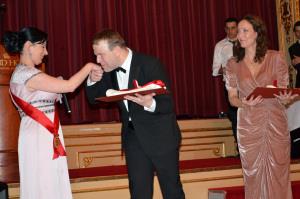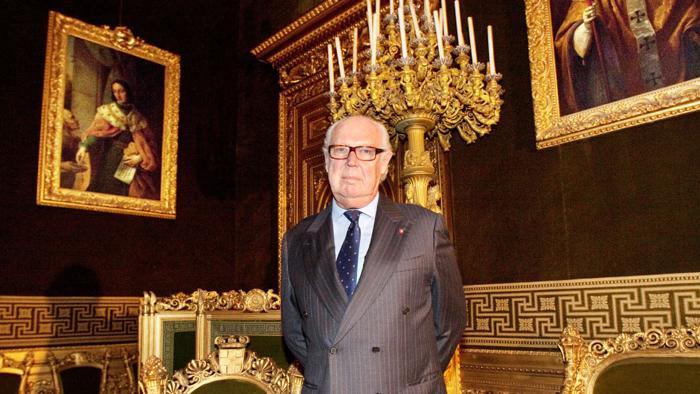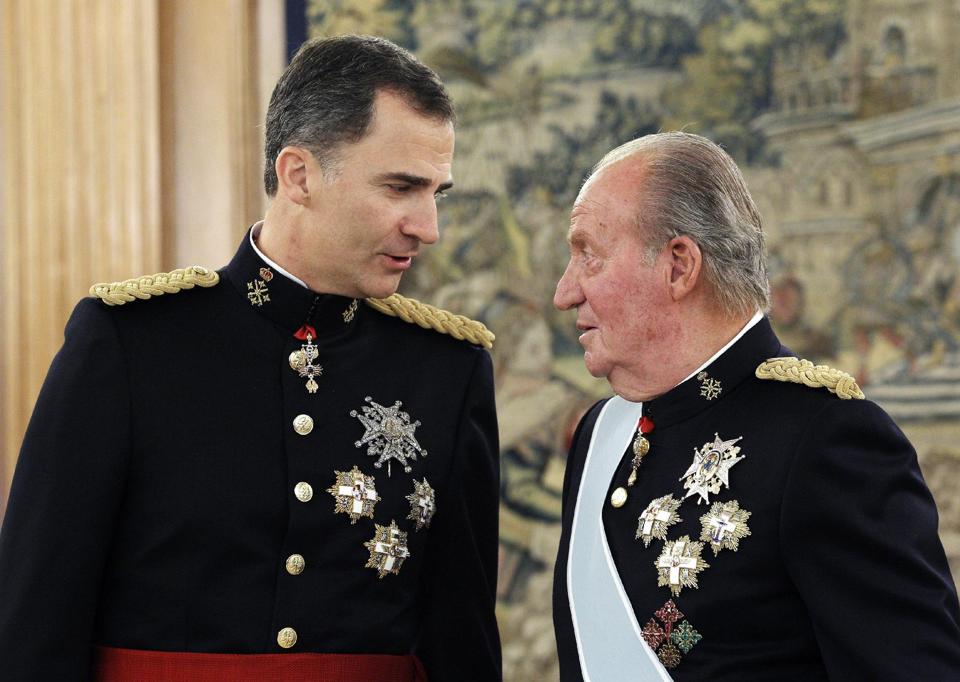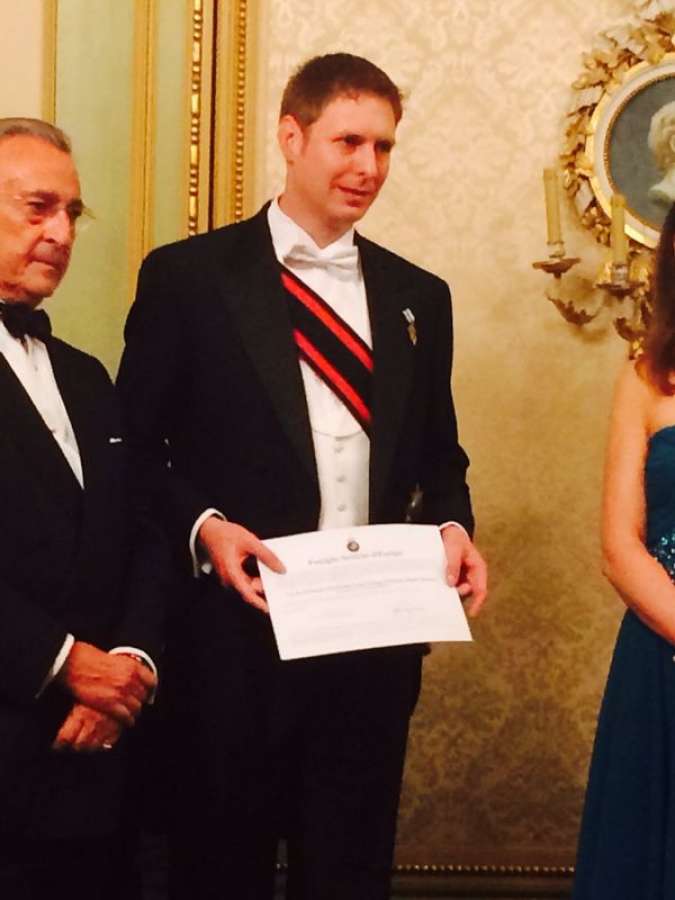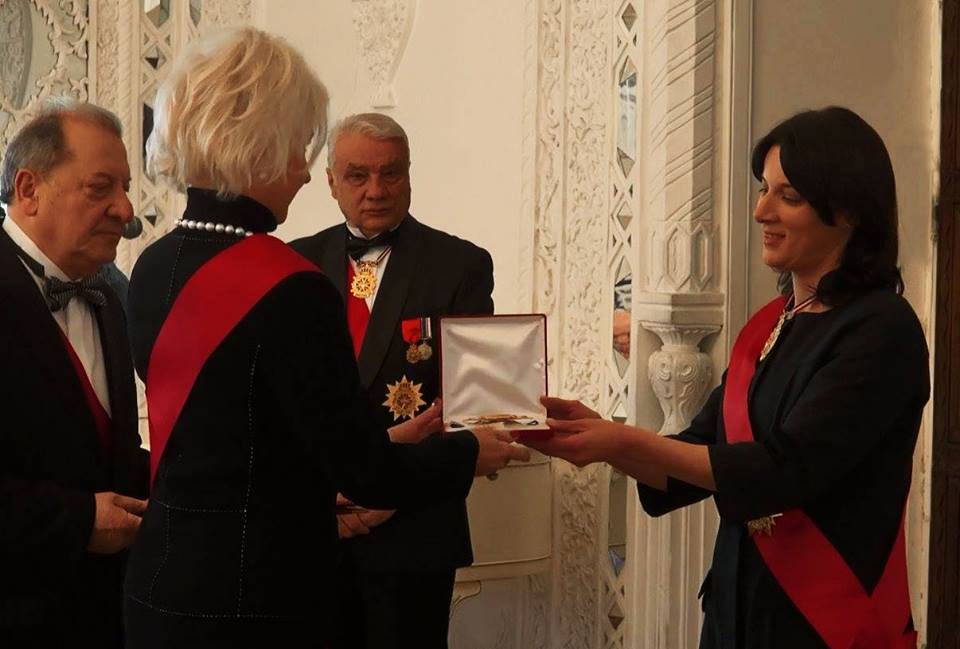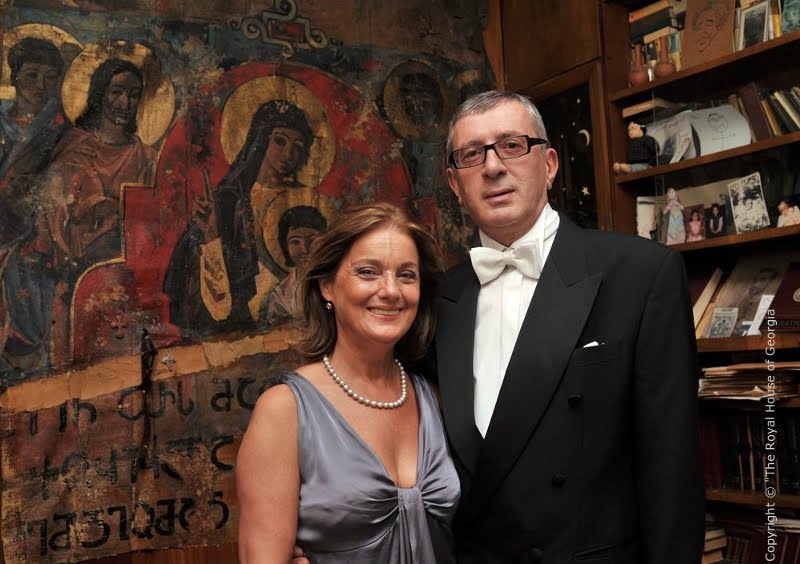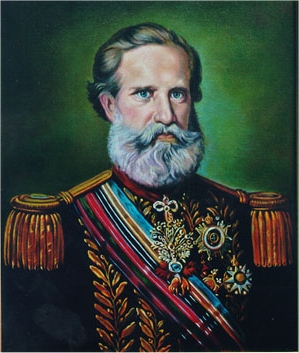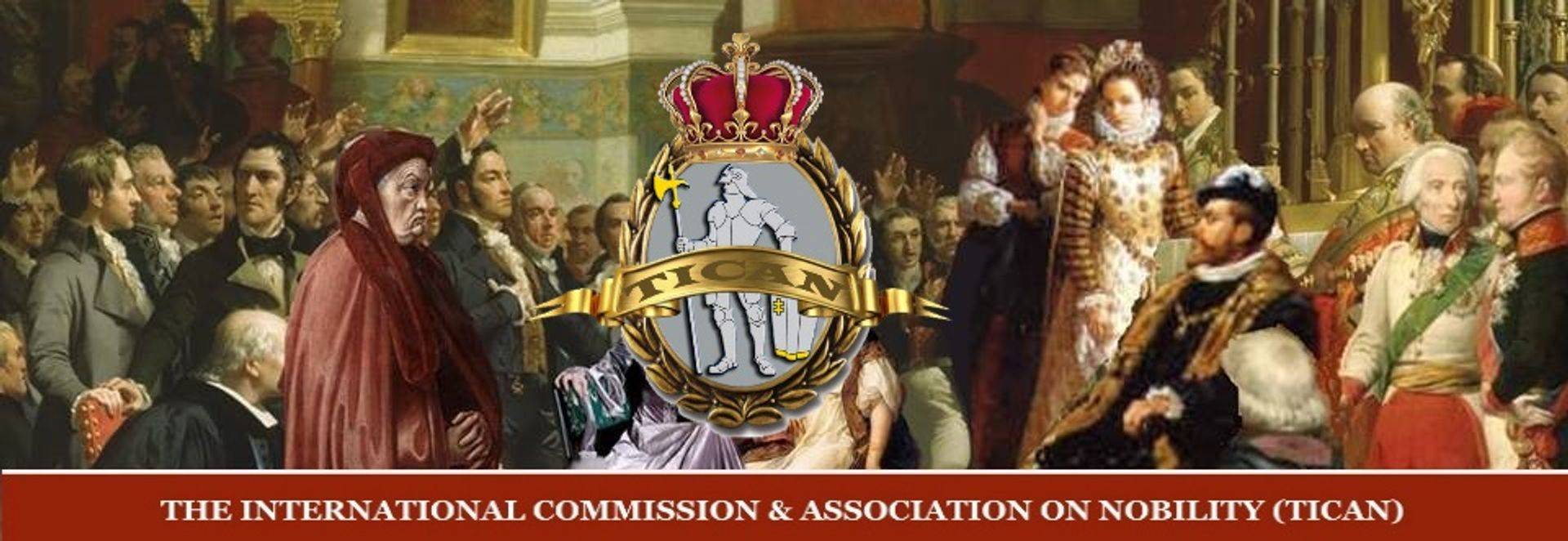
Title
ANTIQUITY OF LINEAGE
ANTIQUITY OF LINEAGE
The term nobilis, in agreement with its etymology, means "well known" or "that everyone knows", but in the historiographical usage the distinction between "aristocracy" and "nobility" has prevailed, that is, between a "nobility in fact" and a "Nobility of law", consequence of a process of closure by which the pre-eminent classes at a certain point in their evolution legally established their own inequality with respect to the others. Although therefore the ancient world has already transmitted the concepts of nobilis and nobilitas to us, for the early Middle Ages the terms aristocracy and nobility cannot be used indifferently.
During the Roman Republic, nobilis ("noble", nobilitas, plural nobiles) was a descriptive term of social rank, usually indicating that a member of the family had achieved the consulship. Those who belonged to the hereditary patrician families were noble, but plebeians whose ancestors were consuls were also considered nobiles. The transition to nobilitas thus required the rise of a non-noble individual to the consulship, who was considered a "new man" (novus homo). Two of the most famous examples of these self-made "new men" were Gaius Marius, who held the consulship seven times, and Cicero. (Marcus Tullius Cicero) was a Roman statesman, lawyer, scholar, philosopher and Academic Skeptic. When the *plebs attained legal equality with the *patricians, the magistracy were in theory open to all citizens (cf. Cic. Sest.137). In fact, the ruling class gradually co-opted powerful plebeian families into association, until (by the 3rd cent. bce) a new, increasingly plebeian, oligarchy emerges. In lists of consuls and priests, the same names again tend to recur, with a slow trickle of newcomers. These new rulers are the nobiles, ‘known’ men—known because they had the right to *imagines, and actors representing their ancestors in full ceremonial dress were a common sight in the streets of Rome. These ‘known’ men naturally had an advantage in elections, and it was increased by a network of family and client relationships built up over generations.
Prevalent reference is made to an age subsequent to the tenth and eleventh centuries, when the aristocracies had already achieved a very clear social characterization, putting an end to a long period dominated by the disintegration and reformation of ever new elites and giving rise to dynastically defined lineages destined to last for several generations. We therefore use "aristocracy" in the title and elsewhere, but repeatedly "nobility" in several places in the text: it is an interchangeability that has precise historiographical origins.
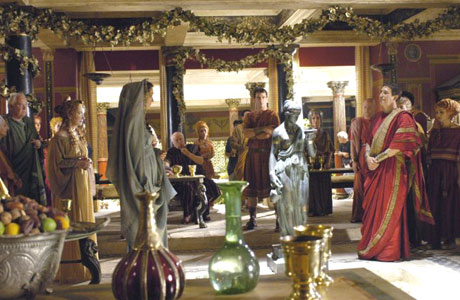
General
A monarchy is a form of government in which supreme power is absolutely or nominally lodged with an individual, who is the head of state, often for life or until abdication, and "is wholly set apart from all other members of the state." The person who heads a monarchy is called a monarch. It was a common form of government in the world during the ancient and medieval times.
There is no clear definition of monarchy. Holding unlimited political power in the state is not the defining characteristic, as many constitutional monarchies such as the United Kingdom and Thailand are considered monarchies. Hereditary rule is often a common characteristic, but elective monarchies are considered monarchies (the pope, sovereign of the Vatican City State, is elected by the College of Cardinals) and some states have hereditary rulers, but are considered republics (such as the stadtholder of the Dutch Republic, or the Great Council of Chiefs in Fiji)
Today, the extent of a monarch's powers varies:
Abosolute Monarchy
Absolute monarchism refers to one person who has absolute rule over a country or a state. This form of rule is usually hereditary or they claim as being given divine right with or without advisors. This may not be a bad form of government and is necessary for certain countries. For example, when the French did not have Law and Order, absolute Monarchism helped it to boost its economy and get the country in order again. Other less developed countries in Eastern Europe heard of absolute Monarchism and also adopted Absolute Monarchy.
Constitutional Monarchism
The system of Constitutional Monarchy has a Head of State and a Government. The advantage of having a Constitutional Monarchy is that the Head of State does not change as the governments change. Due to the fact that only the elected Officials can pass laws, the Head of State acts as an advisor to the Officials. The Head of State?s job also includes choosing the Prime Minister and checking through legislation so to decide whether to accept or reject them.
Executive Monarchs
Executive Monarchs are Monarchs that have the power to create their own laws and pass them. An example of these Monarchs is the British Monarchs from the 17th Century.
In 1th and 18th centuries noble families were in two great categories the "sword nobility" and the "robe nobility". The first one has been established since 1579 to all of those that had received some nobility's letters from the king, in exchange of finance (meaning, patent document in exchange of money). The 2nd one was inside exercise of public charges (functions).
The grant of Noble Patent Documents
Exercise of public charges and military service were an important part of many families from origin, just before 1789.
As deposed dynasties do not form part of a state any more, it might appear that holders of their nobiliary titles do not belong to the nobility of the region over which the dynasty once ruled.
This situation is different when a monarch is involuntarily deposed: the monarch and the state are not entwined any more, but the two are separated. It is in line with international legal principles that (ex-)rulers continue to possess their sovereign rights .
The question whether an order is a legitimate chivalric order or a self-styled order coincides with the subject of the fons honorum. A legitimate fount of honour is a person or entity who holds sovereignty when the order is awarded; ultimately, it is the authority of the state, whether exercised by a reigning monarch or the president of a republic, that distinguishes orders of chivalry from private organizations. Other persons, whether commoners, knights, or noblemen, no longer have the right to confer titles of nobility, knighthood or orders of chivalry upon others.
Transmission and acquisition
Concerning the transmission and acquisition of nobility's titles by way of courtesy and/or honor.
More than in the past, nowadays the nobility is morally and socially legitimate only as far as what it can contribute to society. Its "survival" is directly linked to the degree of mobilization of its members.
And from this evidence that The International Commission and Association on Nobility wants to take action. To be a "positive force" and return to the Society, because the first duty of the nobility is to exist! Now, in Europe, the nobility if it remains isolated tends to vanish. Emptied of its collective ideal, often ends up being reduced to an "empty concept", and only worldly individual. For this reason, the Commission carries out a dual action of information and training.
To inform the nobility itself, but also to inform the public. To do this, the Commissions encourages the revival of nobility, issues and carry out all communications and initiatives to promote a "live" and positive of the world of nobility.
In order to "enliven" the noble heritage of the members of the nobility, The International Commission and Association on Nobility, organizes (when possible) in every region and every country in which it occurs, convivial meetings, travel theme, for strengthening "Networks of friendship" established by the Commission itself. It also promotes courses, conferences and debates, distributes information and documents by the formation of an accurate library of nobility based not only on what was "yesterday" the nobility, but above all on what it is today and should be tomorrow!
What is a self-proclaimed monarchy?
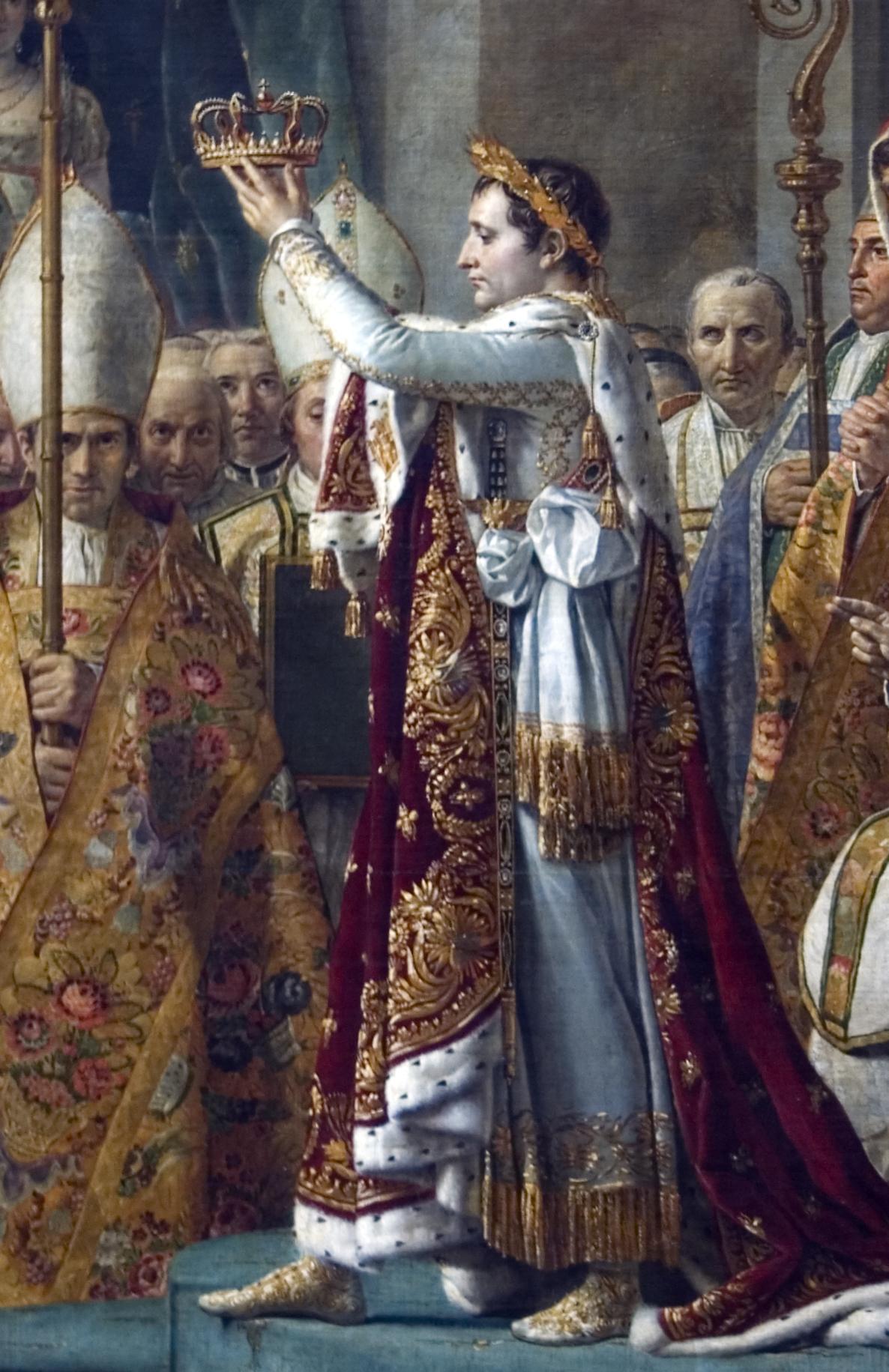
Self-proclaimed monarchy is established when a person claims the monarchy without any historical ties to a previous dynasty. Napoleon I of France declared himself Emperor of the French and ruled the First French Empire after previously calling himself First Consul following his seizure of power in the coup of 18 Brumaire Jean-B?del Bokassa of the Central African Empire declared himself ?Emperor? Yan Shikai crowned himself Emperor of the short-lived ?Empire of China? a few years after the Republic of China was founded.
All kinds of organizations are essentially monarchical.?
(David Starkey, ?Does Monarchy Matter?? Arts and Humanities in Higher Education 2005, 4, p. 215) It is in nations as well as in the private sector in companies, hospitals, schools, universities, churches and families. It is the rule of one that tends to prevail in all the earth. ?Whether you call him Monarch, Pope, Dictator, President or Prime Minister is immaterial. In practice he is [a] King.?
Sometimes titles are used to express claims to territories that are not held in fact (for example) English claims to the French throne or titles not recognized of (antipopes). A pretender is a claimant to an abolished throne or to a throne already occupied by somebody else.
Monarchs have various titles, including king or queen, prince of princess (Sovereign Prince of Monaco), emperor or empress (Emperor of Japan, Emperor of India), or even duke or grand duke (Grand Duke of Luxembourg) or duchess. Many monarchs also are distinguished by styles, such as ?Royal Highness? or ?By the Grace of God?.
Monarchs often take part in certain ceremonies, such as a coronation.
Monarchy, especially absolute monarchy, sometimes is linked to religious aspects; many monarchs once claimed the right to rule by the will of a deity (Divine Right of Kings, Mandate of Heaven), a special connection to a deity (sacred king) or even purported to be incarnations of deities themselves (imperial cult, divine king). In Islam, a caliph is a head of state who is both a temporal leader (of the caliphate, Islamic state) and a religious one (leader of the Ummah, community of believers). Many monarchs have been styled Fidei defensor (Defender of the Faith); some hold official positions relating to the state religion or established church.
A monarchy, (from the Greek "monos archein", meaning "one ruler") is a form of government that has a monarch as Head of State. The distinguishing characteristic of monarchies is that the Head of State holds his office for life, unlike in republics, where presidents are generally elected for a certain amount of time. The term monarchy is also used to refer to the people and institutions that make up the royal establishment, or to the realm in which the monarchy functions.
What is Sovereignty?
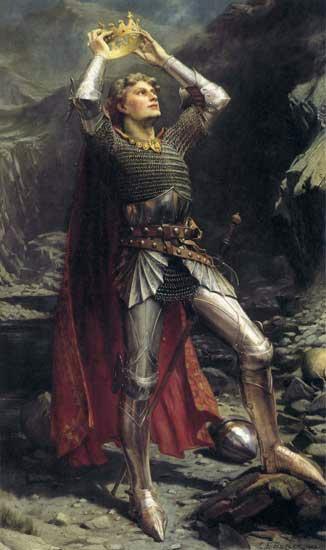
Sovereign" (in the European sense) is a technical term, both noun and adjective. In times past, a sovereign was sovereign, i.e., answerable only to God for his actions. Only the Pope is sovereign in this sense today (as head of the Vatican City State), with Princes Rainier of Monaco and Hans-Adam of Liechtenstein coming a relatively close second. More generally, a sovereign is any hereditary head-of-state, whatever the title, and whatever constitutional powers the sovereign may have. "sovereign" refers to a ruling head of state and need not be royal or imperial.
Sovereignty is the exclusive right to control a government, a country, a people, or oneself. A sovereign is the supreme lawmaking authority. See also: http://en.wikipedia.org/wiki/Sovereignty.
Since all power is thus centered in the sovereign, the Head of the House possesses the political authority, jus imperii, the civil and military power, jus gladii, the right to respect and to the honors of his rank, jus majestatis, and finally the right to confer honors and privileges, jus honorum (G.B. Ugo, Bascapa, Gorino-Causa, Nasalli Rocca, Zeininger and de Francesco).
A sovereign, whether actually reigning or a Pretender, may not only confer in particular his dynastic Orders, but may also create new ones and revive those which were founded by his ancestors (this principle has been determined by the Italian Supreme Court of Appeal) without taking into consideration the fact that by the vicissitudes of succession or of politics some of those Orders may have passed in to the hands of another dynasty.
Sovereignty, by the entry of the Dictionary of Legal Letters, comes from the Latin "super + omnium" (above all), and it becomes an essential peculiarity of state power, not subject to any restriction, unless the order dictated by Law.
According with Dr. Paulo Bonavides on his book "Political Sciences" (Ci?ncia Pol?tica), page 126:
"Sovereignty is one and indivisible, it cannot be delegated, SOVEREIGNTY IS IRREVOCABLE, SOVEREIGNTY IS PERPETUAL, sovereignty is a supreme power, these are the main points of characterization that made Bodin's sovereignty in the seventeenth century an essential element of State"
- "Ius Imperii" - the right to command and rule a territory;
- "Ius Gladii" - the right to impose obedience through command and also control armies;
- "Ius Majestatis" - the right to be honored and respected according with your title;
- "Ius Honorum" - the right to award titles, merit and virtue.
There is two "kinds" of sovereignty related with "Ius Imperii" and "Ius Gladii", one called "de facto" (by fact) and other "de jure" (by right), the both need to be attached to a territory and a people (in other words, a State). A third sovereignty is related to the other two rights "Ius Majestatis" and "Ius Honorum" and it's related to a Dynasty and a family and does not depending on a State.
Here an extract from the book "Chivalry Orders and Nobility titles in Italy " (Ordine Cavallereschi e titoli nobiliari in Italia), Basilio Petrucci, pg.87:
"So does the former King Umberto II of Savoy, once there was no 'subito debellatio, he conserves the royal prerogative in granting honorific titles of nobility and chivalry, along with other sovereigns of the former Italian and foreign states?"
An extract from the book "Studies on Nobility Law" (Estudos sobre Direito Nobili?rio), Dr. Mario Silvestre de Meroe, pg. 63: (* See below Bibliography).
"There outbreaks of political crises in front of which the monarch himself voluntarily accepted - sometimes even want to - that institutional rupture, expressly agreeing with the new order of things. In such cases, AND ONLY THOSE, he loses the dynastic rights, retaining only the princely qualities inherited and transmitted to their descendants, without, however, the attributes of 'pretender'."
Sometimes, the concept of Dynasty may be confused with "family". The most accurate should define Dynasty as "Family ruling - or ruled - over a State". You can have one family with many Dynasties like the Bourbons (France and Spain) and one only State with many Dynasties like France (Valois, Bourbons and Bonapartes).
Another cited fact to be pointed is that, as said, the very same empire or kingdom (ruling or deposed) can have two or more legitimate pretenders. Sometimes, also as said, you may have two Dynasties in the same Family not only in different States but also in the same. The example is Spain, the heir of King Carlos V (1788-1855), a different line of the Bourbon Family (called "Carlist ") is a legitimate pretender of the throne in exile. The ruling King Juan Carlos himself recognized many titles from that Dynasty and therefore their rights.
There are no limitations of claimants per current State. Back to France?s example, there are at least two legitimate pretenders: the Bourbons (Kingdom of France) and the Bonaparte (Empire of France). As long as the monarchy isn't restored in France, nobody in the world can decide who is the more rightful pretender to the throne of France. It doesn't matter how incredible is the scholar, jurist, historian, authority of any kind, nobody can decide who's claim is the valid or not.
The Dynasty can be restored anytime by the rightful heir, and unfortunately, any family dispute cannot be solved until the monarchy is restored in that particular State. One perfect example of this is the Brazilian Imperial Family. The firstborn branch, popularly called "Petropolis Branch", had an abdication document signed by its ascendant, including his person and all his descendants.
NOBILITY
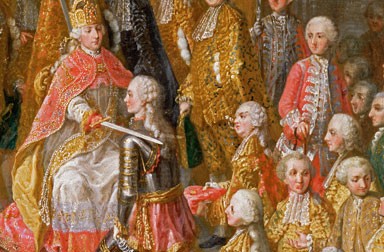
?There is nothing noble in being superior to some other person. The true nobility is in being superior to your previous self.?
Of all varieties of fopperies, the vanity of high birth is the greatest. True nobility is derived from virtue, not from birth. Title, indeed, may be purchased, but virtue is the only coin that makes the bargain valid.
- Robert Burton
Nobility is a government-privileged title which may be either hereditary or for a lifetime. Hereditary titles, in a general sense, are titles, positions or styles that are hereditary and thus tend or are bound to remain in particular families.
Titles of nobility exist today in many countries, although it is usually associated with present or former monarchies. The term originally referred to those who were "known" or "notable" and was applied to the highest social class in pre-modern societies. In the feudal system (in Europe and elsewhere), the nobility were generally those who held a fief, often land or office, under vassalage, i.e., in exchange for allegiance and various, mainly military, services to the Monarch and at lower levels to another nobleman. It rapidly came to be seen as a hereditary caste, sometimes associated with a right to bear a hereditary title and, for example in pre-revolutionary France, enjoying fiscal and other privileges. Today, in most Western countries, "noble status" is a purely honorary dignity that confers no legal privileges; an important exception is the United Kingdom, where certain titles - titles of the peerage, until recently, guaranteed a seat in the Upper House of the UK Parliament; hence its name, House of Lords - still confer some residual privileges.
Nobility is a historical, social and often legal notion, which should not be confused with socio-economic status which is mainly statistical based on income and possessions. Being wealthy or influential does not automatically make one a noble, nor are all nobles wealthy and influential (aristocratic families have lost their fortunes in various ways, and the concept of the 'poor nobleman' is almost as old as nobility itself).
Countries without a feudal tradition do not have a nobility as such. Various republics, including the United States, Mexico, and Italy have expressly abolished titles of nobility. Although many such societies have a privileged 'upper class' with great wealth and power, this does not entail a separate legal status, or different forms of address.
In Italy before 1861 various noble sources existed, each one with its own criteria and principles relative to the numerous different states that made up our country. There were around 8,000 families and people who were recognized as nobles by the Heraldic Consulta of the Kingdom. A further 170/200 were recognized and ennobled by His Majesty Umberto II, between 1948 and 1983, when he died.
Likewise, we consider there are a further 2,000 families who hold false titles or who are convinced they are nobles. False nobles of either nature are those who misinterpret a real and not acclaimed state of nobility, parading coats of arms and crowns obtained over the years or, today, from ?princes? with imaginative pretensions.
The nobilities of the various modern states of Europe came into existence when feudalism, a social system based on land tenure, succeeded the imperial government of Rome after the Germanic invasions. During the unsettled social and economic conditions that followed the fall of the Roman Empire in the 5th and 6th centuries, some men acquired land, usually by conquest. These men then granted parts of their holdings to others, over whom they thereafter exercised certain rights, including taxation and the administration of justice, and from whom they were entitled to various services. Those who granted the land were known as lords and those who accepted it were known as vassals. The lords of a nation formed its nobility, their rank depending on the extent of their possessions. The preposition de in the names of French nobles and von in the names of German nobles (both meaning ?of? or ?from?) express the idea of land ownership that is fundamental to the feudal concept of nobility.
Since the French Revolution (1789-1799), the tendency in European countries has been strongly toward the abolition of hereditary titles. In France the nobility was first deprived of its special rights and privileges, and then, in 1790, all hereditary titles were abolished by decree. Napoleon I, however, created a new nobility, granting titles and estates to those who had served him well, especially in military affairs. After Napoleon's downfall Louis XVIII, king of France, restored to the prerevolutionary nobility many of its former privileges, rights, and honors. The Second Republic (1848-1852) once more abolished nobility in France, but Napoleon III restored the aristocratic class. Under the Third Republic (1871-1945) the nobility was once more abolished. In contemporary France, persons who have inherited titles may use them as part of their family name, but they possess none of the special rights or honors of the former nobility.
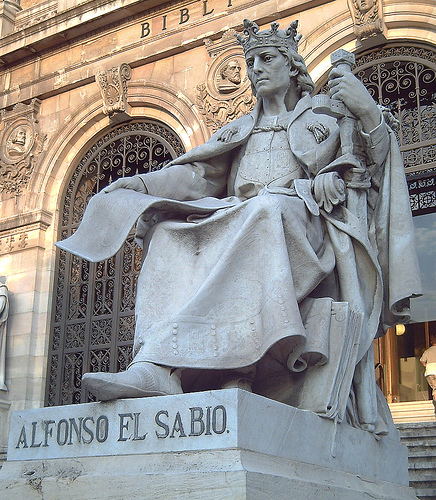
In Germany, titles of nobility existed from early medieval times until they were abolished when the region became a republic in 1918. After 1918, members of the former nobility were permitted to use titles only as part of a name. In Russia, titles of nobility similar to those of the nations of Western Europe were instituted by Emperor Peter I. All such titles were abolished by the Revolution of 1917. In Spain, titles of nobility still exist. Members of the higher nobility bear the title of grandee; the lesser nobles are known as los titulados de Castilla.
In the United Kingdom the sovereign still grants titles of nobility. The British nobility is divided into an upper nobility and a lower nobility. The upper consists of all those who hold a hereditary rank above that of a baronet; it includes those with titles of duke, marquis, earl, viscount, and baron. Among the lower nobility are those holding the rank of baronet, knight, and esquire. The upper nobility makes up the British peerage, and its members have the right to hereditary seats in the House of Lords. Life peers can also be created. They hold the rank for their own lives only; the title does not descend to their children. The Appellate Jurisdiction Act of 1876 gave the Crown the right to give judges the rank of lord of appeal and grant them life peerages. The Life Peerages Act of 1958 gave the Crown the right to create other life peers besides judges, and about ten are now created each year. All life peers are appointed to the House of Lords, where members review legislation passed by the House of Commons and serve as Britain's highest court of appeals.
NOBILITY IN ITALY
An entirely different state of affairs exists in Italy. The abolition of the Papal States, the Kingdom of the Two Sicilies, the Grand Duchy of Tuscany, the Duchies of Parma and Modena, and the incorporation of the Austrian dependencies in Northern Italy into a united Italian Kingdom, led to the establishment of a new national nobility, with an attempt (not wholly successful) to impose a uniform nobiliary law.
Italian nobiliary practices cannot be compared directly to those of other countries, such as Scotland or Russia. Even within Italy, regional differences must be considered because until circa 1870 the nation did not exist as a politically unified state.
Until the 19th century, the peninsula we now call Italy was made up of many city-states. These independent nations exist under successions of various invading empires of the French, Turks, Germans, Austrians and Spanish. The individual states, although sharing a small geographical space, were each culturally unique. They spoke separate dialects, worshiped in different churches and had unique attitudes. The cultural movement of the 16th and 17th centuries created a sense of nationalism within the future Italy for the first time.
The Nobility of Italy reflects the fact that medieval "Italy" was a set of separate states until 1870 and had many royal bloodlines. The Italian royal families were often related through marriage to each other and to other European royal families. We must realize than less that 150 years ago Italy was comprised of about 10 separate small countries, and as result, great-great grandfather was not ?Italian?, but either Piemontese, Toscano, Veneziano, Modenese, Parmigiano, a subject of the Pope, or Napoletano ? Siciliano, etc.
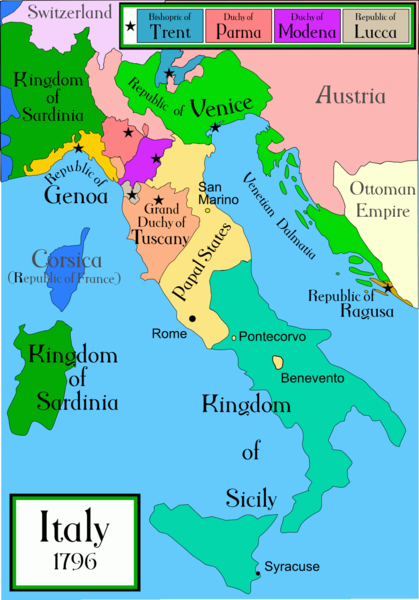
Prior to Italian Unification, the existence of the Kingdom of Sardinia, the Kingdom of the Two Sicilies (which before 1816 was split in Kingdom of Naples and Kingdom of Sicily), the Grand Duchy of Tuscany, the Duchy of Parma the Duchy of Modena, the Duchy of Savoy, the Duchy of Milan, the Papal States, various republics and the Austrian dependencies in Northern Italy led to parallel nobilities with different traditions and rules.
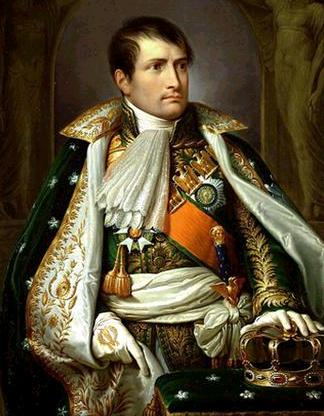
In 1796, Napoleon, the Emperor of France, began his invasion of Italy and eventually liberated the city-states from the various foreign rulers. He politically unified them into the Kingdom of Italy, over which he proclaimed himself king. It is interesting to note that Napoleon was born Napoleone Buonaparte and later changed his name to the French Bonaparte, so he was actually Italian, not French. During his rule, Napoleon created Italy?s first centralized administrative, judicial and civil code. The feudalism that characterized prior centuries was virtually eliminated. The civil vital records for most regions began in 1809, during the Napoleonic era so we have Napoleon to thank for the many records we are able to discover today.
After Napoleon?s fall, Italy reverted to its reunification city-states and the European monarchs redrew their old boundaries. The north was ruled by the Austrian empire, the central region consisted of the Papal States and the south was ruled by Spain. Secret underground societies developed to encourage a free Italy. In the mid-1800s a movement called il Risorgimento (the resurrection) inspired a new Italy. During this political active decade between 1860 and 1870, il Risorgimento incited Victor Emmanuel II to unite the individual kingdoms into a single empire. By 1870, Italy as we know it was born.
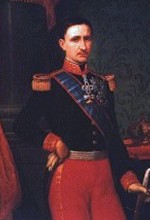
Under the united Kingdom of Italy a new national nobility, with an attempt (not wholly successful) to impose a uniform nobiliary law, was created, including male succession (although it was possible for ancient titles to be transferred to an heir in the female line by royal authority), and some acknowledgment by the King of Italy of titles conferred by Francis II of the Two Sicilies in exile by making new grants in the same name. The Lateran Treaty of 1929 acknowledged all Papal titles created before that date and undertook to give automatic recognition to titles conferred by the Holy See on Italian citizens in the future.
(Above picture: Francis II (Italian: Francesco II, christened Francesco d'Assisi Maria Leopoldo, January 16, 1836 ? December 27, 1894), was King of the Two Sicilies from 1859 to 1861).
The last Italian monarch, King Umberto II (1904-1983), was deposed by popular referendum in 1946. Though its results have been disputed, at least in certain quarters (particularly by fervent monarchists and by several Italian regional courts), this referendum (remarkably, the first occasion for Italian women to vote) was held under American auspices during the Allied occupation and established the Italian Republic as a legitimate state recognized internationally and, eventually, by all of the former ruling dynasties, the Vatican, the Republic of San Marino and the Sovereign Military Order of Malta.
Article 139 of the Constitution of the Italian Republic codifies the exile of the King of Italy and his male heirs, a provision being abrogated only fifty years later. It also abolishes the Consulta Araldica and official recognition of predicati (territorial designations or "seats") if recognized during the Fascist era (i.e. after 28 October 1922). Subsequently, these designations could be suffixed to surnames as a result of particular petitions to provincial courts having jurisdiction in such matters. Eventually, Italian high courts would issue still more rulings to attenuate the status even of those titles recognized until 1922, but local courts would uphold the rights to identity of titled aristocrats in cases where impostors claimed the titles and territorial designations of living persons whose immediate forebears had been recognized by the Consulta Araldica before 1922.
While there exist no means to petition for "official" recognition of Italian noble titles or coats of arms, some private organizations, such as those associated with the former ruling dynasties, continue to recognize these.
The Italian Republic's recognition (for cultural purposes) of royal dynasties other than the House of Savoy served to bolster a return of adherence to nobiliary laws as these had existed before 1860. The dynasties of the Two Sicilies and Tuscany naturally recognize their own heraldic norms, rather than those of the House of Savoy. The two orders of knighthood (Order of Malta and Constantinian Order of St. George of the Two Sicilies) that recognize ancestral nobility for certain knights employ their own nobiliary standards, at least in theory, and in a few respects these differ from those employed in the Savoy dominions in recent centuries.
King Umberto's only son and successor, H.R.H. Crown Prince Vittorio Emanuele, while the King had never abdicated his rights, his son inherited the claim after the abolition of the Monarchy. The right to award the Royal Orders has been actively maintained and, when the former Papal Secretary of State, Cardinal Casaroli, publicly accepted the Collar of the Supreme Order of the Annunziata in 1988, the Holy See was categorically acknowledging that the purported abolition of this Order by the Italian Republic was illegal and ineffective and the right of the Crown Prince to award his dynastic Orders of Saints Maurice and Lazarus, which now has members across Europe and in the United States and is engaged in an active charitable mission, and has established the Order of Civil Merit of Savoy in a reform of the Civil Order of Savoy.
"The historical evidence of an ancestor's nobiliary title is usually obvious and can be confirmed through juridical investigation because of documents creating or recognizing the rank. It is necessary to establish (genealogically) one's descent from a titled nobleman claimed as an ancestor-whether a father or great-great-grandfather-if a claim is to be based upon demonstrable fact rather than whimsical fancy or familial "tradition." (Luigi Mendola is one of the world's foremost experts on Italian heraldry and feudal history).
Nobiliary Titles of the Two Sicilies
Although titles of nobility (like other heraldic rights) have not been recognized officially by the Italian state since 1948, their social use is legal, and such titles continue to be recognized by the royal families (House of the Two Sicilies, House of Savoy), the Vatican City state, and the Sovereign Military Order of Malta. The principal titles and ranks include: Noble Prince (Principe) and Noble Princess (Principessa), Duke (Duca) and Duchess (Duchessa), Marquess (Marchese) and Marchioness (Marchesa), Count (Conte) and Countess (Contessa), Viscount (Visconte) and Viscountess (Viscontessa), Baron (Barone) and Baroness (Baronessa), Patrician (Patrizio), Nobleman (Nobile), Hereditary Knight (Cavaliere Ereditario).
Honors Bestowed by the House of the Two Sicilies
The Constantinian Order is recognized by the Italian Republic (with circulars issued by the Foreign Ministry and the Ministry of Defense on 20 July 1963 and 16 May 1996), and by the other entities mentioned at "Nobiliary Titles" (above). Consequently, Italian ambassadors and military officers may wear its decorations while in service. A knight may be addressed by the Italian title "Cavaliere," abbreviated Cav., preceding his full name or his surname alone; a knight commander may be addressed "Commendatore" in the same manner. A dame may be addressed "Dama" preceding her given name alone or her full name. The consort of a knight may be addressed formally "Donna" (Lady) in like manner.
After 1946, usually as the result of circumstantial exigencies unique to each case, some nobiliary creations and matriculations of the late King of Italy, Umberto II, were made at variance to particular prescriptions of Italian statute as established by King Vittorio Emanuele III. Furthermore, certain historically independent entities based in Italy that make determinations regarding the recognition of ancestral nobility rule according to their own traditional norms, which in some instances may differ somewhat from those promulgated by the King of Italy in this and other decrees: The Sovereign Military Order of Malta bases its nobiliary rulings on criteria which date from the days of medieval feudal law, without recourse to any outside authority, while the Royal House of the Two Sicilies recognizes exclusively the body of heraldic law enforced in that realm until 1860 which, for example, ascribed considerable importance to the rights of female succession, a practice all but abolished in the Kingdom of Italy.
The following decree should be viewed in the context of the Lateran Treaties ratified a few years afterward (1929), terms of which resolved a longstanding dispute between the Kingdom of Italy and the Roman Catholic Church which had resulted in Catholic marriages not being recognized as legal by the Italian state, thereby necessitating civil marriages to ensure legitimacy of issue. The Consulta Araldica was abolished by the Constitution of the Italian Republic in 1948; all royal decrees pertinent to heraldry and nobility, as well as numerous other laws decreed between 1922 and 1946, eventually were abrogated ex post facto, this abolitive legislation being supported by subsequent decisions rendered by Italian high courts in the early 1960s. Were Italy still a monarchical state today, additional heraldic legislation might well be required to address such matters as widespread divorce, marital annulment and subsequent remarriage among the nobility, as well as the emergence of more egalitarian attitudes towards the rights of adopted children, conditions unforeseen in 1946. Its publication here marks the first appearance of this remarkable document in the English language.
Statute Governing Succession to Nobiliary Titles and Styles
Vittorio Emanuele III
By the Grace of God and the Will of the Nation
King of Italy
Having seen Article 79 of the Fundamental Statute of the Kingdom;
Having heard the advice of the Council of Ministers;
Acting on the advice of the Prime Minister;
We have and do by these presents decree that:
Article 1
In view of the ancient dispositions based upon various laws in each region of Italy, the order of succession regarding titles and nobiliary attributes [i.e. ranks, territorial designations, etc.] created by the Sovereigns of the ancient States prior to political unification shall be abrogated in favor of the following set forth herein.
Article 2
The succession to nobiliary titles and territorial designations shall favor the lineal male descendants in the agnate line of the last individual invested, according to primogeniture, without limitation as to degree of kinship or consanguinity but nevertheless in favor of the direct line of descent.
The lineage of those qualified to succeed to such ranks must ascend patrilineally to the first individual invested with the title.
Titles of nobility shall not be transmitted to females, nor through a female line, except under the conditions set forth in the first section of article 4.
Article 3
Natural children, even if they be recognised, as well as those children legitimised by Royal Decree, shall not qualify to succeed to titles of nobility or familial territorial designations.
An adopted child shall not qualify to succeed to the right to a title of nobility or familial territorial designation of his adoptive parent except in the event of the exercise of the Sovereign Prerogative for titles of new creation in conformity to Article 79 of the Fundamental Statute of the Kingdom.
Article 4
Titles created by any prescription whatsoever, and with special reference to those legally recognised in the persons of male heirs general, are succeeded to from the day of birth of the heir.
Those titles created with the provision of succession by, in addition to male heirs general, female heirs general as well, shall be borne by the ladies only until marriage, and do not entail rights to succession.
No modification is made to the rights of both sexes relative to the use of the qualification "Nobile" as set forth in Article 42 of the Regolamento [Regulation] approved by Royal Decree number 314 of 5 July 1896.
Article 5
At the time that the present decree becomes law, titles which have been inherited by females shall be transmitted to their male heirs, and shall in the future devolve to the heirs of the same in conformity to the terms established with Article 2.
In the event of extinction of heirs in the male lines, in which case a female has come to inherit a title, said title, with the attached territorial designation, shall, by authority of Letters Patent of Royal Assent, be granted to the senior male descendant of the agnate line of the family to which it appertained on the day of promulgation of the laws abolishing feudalism, in compliance to the terms established with Article 2.
Article 6
A title which, except under the provisions of the first section of Article 4, is at the time of ratification of the present law borne by a nubile female shall, on the day of her marriage or, in the absence of marriage, on the day of her death, devolve to the senior male in the agnate line of the family to which the lady appertains [i.e. into which she was born], in conformity to Article 2, except under the conditions described in Article 9.
If a title is vested in the person of a lady in the state of marriage when the present statute is ratified, her title shall upon her death devolve to the senior male in the agnate line of the family to which the she appertains, any prior Letters Patent of Royal Assent recognising rights of succession in her favor and in favor of her heirs according to any other prescription being null and void.
In the event of more than one title being vested in the person of a lady in the state of marriage when the present statute is ratified, there may be issued, upon the request of the the titled lady, a Decree of Royal Assent establishing that upon her death one of these titles, and the associated territorial designation, shall devolve to the firstborn son of her marriage, provided that this does not coincidentally include the territorial designation attached to the name of the family into which the titled lady was born.
Article 7
The husband of a titled lady, even if he be a widow, may under terms of the present statutes legally may bear by courtesy the masculine title analogous to the title of nobility of his spouse. However, his use of said title shall not include the territorial designation, and shall cease upon his remarriage.
Article 8
The rights of those invested with one or more title shall be hereby preserved, in consideration of the legally prescribed means of transmission of same.
Subsequent succession to the title shall conform to the conditions described in Article 2.
Article 9
If , before or after the ratification of the present law, the male agnate line of a family that, in conformity to the first or second sections of Article 5, had the right to titular succession, becomes extinct, the title may, with an act of the Sovereign, devolve to the firstborn female issue of its last bearer, from whence to her firstborn male issue. In that event, the lady's male issue may legally be permitted to assume the surname of their mother.
Article 10
In exceptional cases, acting upon the request of the bearer of more than one nobiliary title, there may be issued a Decree of Royal Assent according to which his firstborn daughter or, in default of which, his nearest sister, may, in the absence of male heirs, succeed to one of his titles and the attached territorial designation, insofar as the latter is not attached to the surname as used by other members of the family in the male agnate line. Upon the death of the said lady who succeeds to the aforementioned title, it shall devolve to her respective male issue. This condition shall be applicable only in compliance with ancient concessions that were made regarding Neapolitan, Sicilian and Sardinian transmission.
Article 11
Upon the request of the bearer of more than one nobiliary title, a Ministerial Decree issued on the advice of the Consulta Araldica may be made permitting the firstborn male issue, or in default of which the next heir in the line of succession, to use during the entire course of his life one of the aforementioned [secondary] titles.
Article 12
Pre-existing laws and practices relative to the succession to titles of nobility which are contrary to the conditions set forth herein are hereby abrogated.
Article 13
The terms of the present decree shall be applicable to matriculations and creations made following political unification, as well as to decisions regarding future matriculations and creations, which in particular cases have not been rendered, or have not explicitly been recognised, or which are governed by special conditions relative to the successors.
Article 14
The present decree shall take effect from the date of its publication in the Gazzetta Ufficiale of the Kingdom.
We order that the present decree, bearing the seal of the State, be placed in the official registry of laws and decrees of the Kingdom of Italy, to be made available to whomever shall seek to view it.
Given at Racconigi this 16th day of August 1926.
[signed] VITTORIO EMANUELE
Seen by the Keeper of the Seals, Rocco
Deposited with the Corte dei Conti 4 September 1926, in the Registry of Government Acts, volume 252, page 23.
Things were establishing by the 9th century, and many of the titles we have now were being used by the early middle ages, as in most of Western Europe. Most Italian nobility took their surnames from their ancestral seats. In the case of Italy, you got names like di Monteverde (=from Monteverde), which indicate a noble origin. Peasants got names that indicated their job (Ferraro=smith) or their appearance (Barba=beard) or their fathers (di Giulio). Then there were the titles, which indicated the hierarchy of nobility, such as Re (king), Principe (prince) Duca (duke) Conte (count) but in Italy, there was rarely a cut off point where a noble title could no longer be used. So if you were the great-grandson of the youngest son of a count, you were still a count. In England, you lose your title after 2 generations if you are not in direct line. Some of the bearers of very old titles today are holding them by this right, not because they have any claims to the ancestral lands.
Nobles and Nobility.
Romans recognized three orders: patricians, equestrians and plebeians, and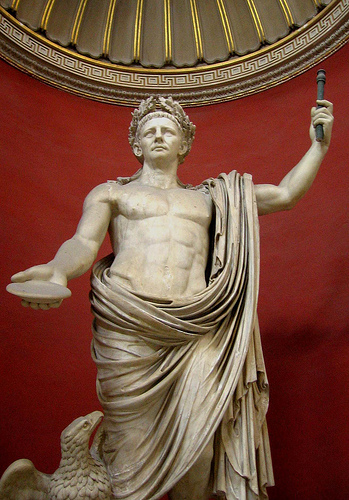 earlier, before the foundation of the republic, a fourth: royalty. Added to this, there was the concept of nobilis; to be noble meant you were descended from someone who had been Consul; being a patrician was necessary to become Consul (though you could buy your way in), but to be noble was ineffably grander, at least to the Roman way of thinking. This has been turned around a bit in Italy; in Italian cities today, a "patriciate" exists which is considered to be above "mere" nobility.
earlier, before the foundation of the republic, a fourth: royalty. Added to this, there was the concept of nobilis; to be noble meant you were descended from someone who had been Consul; being a patrician was necessary to become Consul (though you could buy your way in), but to be noble was ineffably grander, at least to the Roman way of thinking. This has been turned around a bit in Italy; in Italian cities today, a "patriciate" exists which is considered to be above "mere" nobility.
These notions of the Romans apply to present-day parlance. In the British system, one can discriminate between royalty, nobility, knights, gentry and commons: five grades. The Germans tend to regard certain of what the British regard as gentry as noble, and at the highest levels, what the British define as noble resembles what the Germans regard as "princely" and in general, continental systems as a whole tend to have a broader definition of "noble".
In essence, the nobility were the landowners. To be a landowner you had to be prepared to defend your right to own that land, and with the progressive disorders that lead to the fall of the Western Roman Empire and the development of the feudal system in Europe, nobility became synonymous with the military caste -- an essentially self-appointed caste.
In the West, it is nearly impossible to trace any noble lineage back much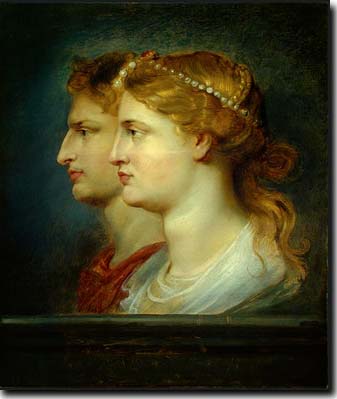 before AD anything before 1100 is remarkable. The organized system of titles we have today is a rather late development, but "count", and "prince" go back to the Roman Empire. Only when it was recognized that one might have "betters" did the nobles start paying attention to titles, styles, and pedigrees.
before AD anything before 1100 is remarkable. The organized system of titles we have today is a rather late development, but "count", and "prince" go back to the Roman Empire. Only when it was recognized that one might have "betters" did the nobles start paying attention to titles, styles, and pedigrees.
A distinction needs to be made between "nobility" and "peerage". In the British system, a peer is the holder of the title, while a noble is a member of a family headed by a peer. In the UK, such family members, while "noble", are still technically common, which is not necessarily the case elsewhere. More narrowly, a peer also sits in parliament, as with the British House of Lords or the former French House of Peers. There are some titles in the United Kingdom which do not permit one to sit in the House of Lords; thus, in Scotland, the distinction of a "Lord of Parliament".
While the British system is tidily exclusive, this is not the case in other systems. Some systems have long tolerated "courtesy titles", a putative title of nobility that has no basis in fact. In other cases, all the descendants of a noble have a title, the title holder, as in Italy.
Fran?ois Velde writes about the French situation:
Nowadays, anyone descended from a count uses the style of count (although "le comte Pierre de X" is distinguished from "Pierre, comte de X" who is the real title-holder). That makes it seem like many counts. Since there are only about 1000 authentic titles, the share of titles/peerages to population is similar to England.
In Germany, since the Weimar Republic, all titles are considered part of one's last name. Thus, a real title holder can "adopt" an adult, and the otherwise unrelated person then can become "Joe Schmuck Duke of Saxony.
Then there is the matter of how the nobility of a previous state was incorporated into that of a successor state or regime. This particularly applies to Germany as well as Italy, but also applies to the case of the United Kingdom and in France, how titles granted after the ancient regime are handled.
The High Nobility of the Holy Roman Empire
In the Middle Ages, there was no clear stratification of nobility in the Holy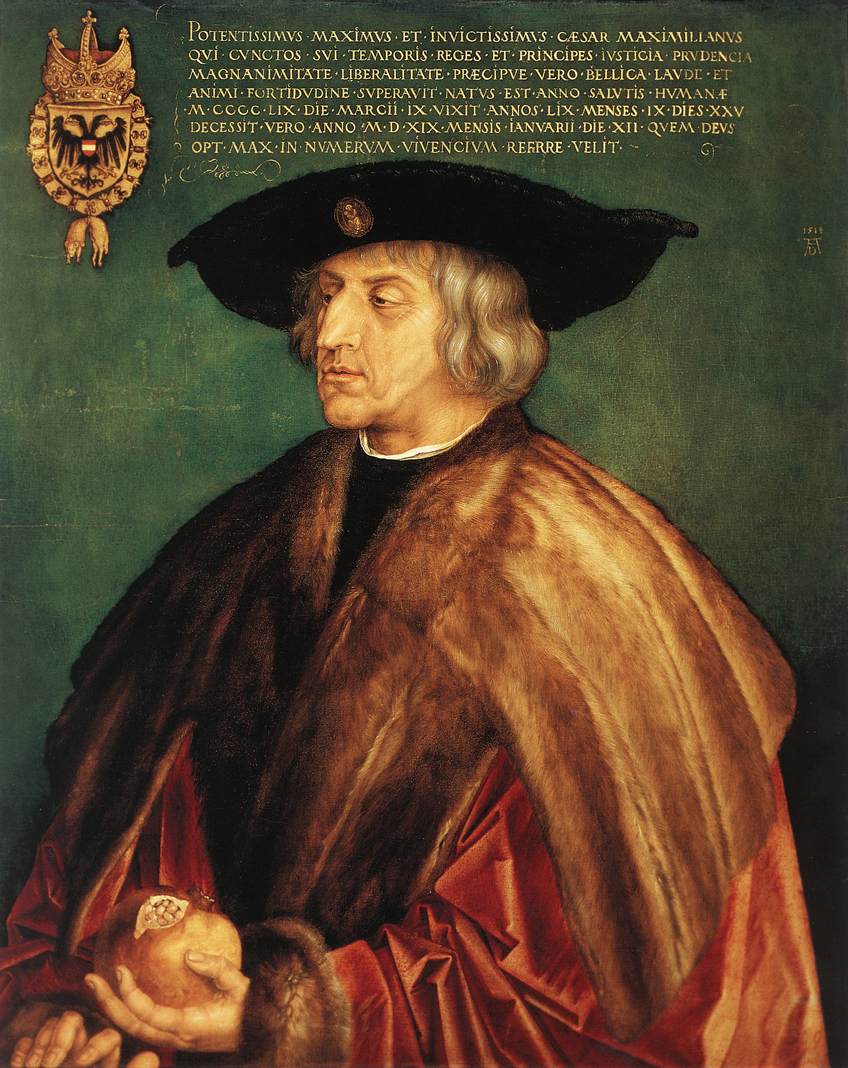 Roman Empire. One side effect of the Imperial Reform, which began in 1495, was the establishment of three noble groups: the High Nobility, the Imperial Knighthood, and the Territorial Nobility. The Imperial constitution defined the context that made the High Noble families distinct from other groups: they possessed both the Imperial immediacy and the Status of the Imperial Estate. All sovereign houses, which ruled in various German lands in the 19th and 20th centuries, descended from the High Nobility of the Holy Roman Empire.
Roman Empire. One side effect of the Imperial Reform, which began in 1495, was the establishment of three noble groups: the High Nobility, the Imperial Knighthood, and the Territorial Nobility. The Imperial constitution defined the context that made the High Noble families distinct from other groups: they possessed both the Imperial immediacy and the Status of the Imperial Estate. All sovereign houses, which ruled in various German lands in the 19th and 20th centuries, descended from the High Nobility of the Holy Roman Empire.
(Picture above right: Maximillian (by Durer, 1519), Holy Roman Emperor. The Holy Roman Empire was the superpower of Europe along with France, they were each much larger and wealthy than England. Maximillian was succeeded by Charles V in 1819).
Catholic hierarchy : the nobiliary element in the Catholic Church
by Jan-Olov von Wowern
(Free article)
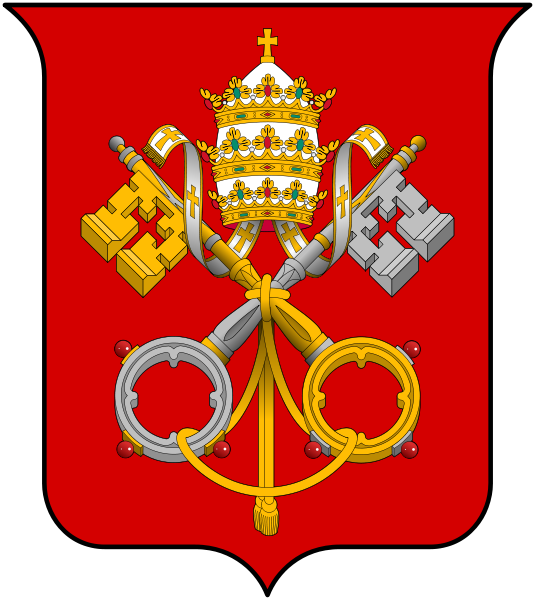
It seems to me that some of the oldest still surviving hierarchies are those of the nobility, the Church and the military. What is perhaps not commonly known is how they correspond with each other. Below is an outline of the correspondence between the catholic hierarchy of the Holy Roman Catholic Church and that of the nobility.
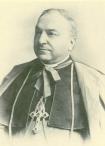
Let me first say that all noblemen are dependent on a Prince or Monarch for their noble rank. Catholic priests have since time immemorial held rank equivalent to that of an (untitled) nobleman, nobile. It is from a nobiliary standpoint interesting to reflect upon the Lateran Pacts of 1929 between the Holy See and Italy. The Vatican City State is recognized as a sovereign country and the Supreme Pontiff as its Sovereign, in this capacity equal to the King of Italy. Article 21 of the "Conciliation Treaty" states that "All Cardinals shall enjoy, in Italy, the honours due to Princes of the Blood".
(For the text, see http://www.aloha.net/~mikesch/treaty.htm ).
(Picture above left: Pietro Gasparri (May 5, 1852 ? November 18, 1934) was a Roman Catholic archbishop, diplomat and politician in the Roman Curia and signatory of the Lateran Pacts).
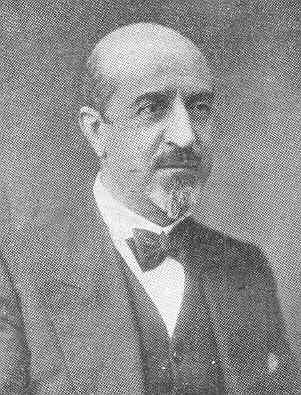
(Picture left: Francesco Pacelli was the right hand man for Pietro Gasparri during the Lateran Treaty negotiations)
This means that the two top levels of the noble hierarchy are defined, and they correspond to equal ranks of the priesthood. The other steps follow by extrapolation in the only way possible.
Catholic Hierarchy Noble hierarchy
Pope Monarch
Cardinal Prince
Archbishop Duke/Marquis
Bishop / Aux. Bishop Count/Baron
Monsignore/Priest Noble
Of course a number of details may be argued. It should however be noted that other codification exists as well. In the Almanach de Gota, all Cardinals are listed as having the rank of Prince (http://www.almanachdegotha.com/ ). In his book "The Holy See and the International Order", that most distinguished diplomat of the Holy See H.E. Archbishop Hyginus Eugene Cardinale has devoted part of a chapter to "Armorial bearings, attire and titles of Catholic priests", and the entire book is highly recommended.
It should further be noted that the nobiliary hierarchy is usually regarded as logarithmic. The step between noble and Baron is often regarded as greater than that between Baron and Count, etc. I am not competent to judge if this is also the case with the catholic hierarchy of the Church, but it will be evident that for a number of reasons it is only possibly to make approximations when trying to bring the rank systems above in harmony with each other.
Popes have granted a number of nobiliary titles to deserving subjects during the course of the centuries. According to the Lateran Pacts of 1929, in the Concordat Art 42, "Italy shall admit the recognition of titles of nobility conferred by the Supreme Pontiff, even after 1870, and of those that shall be conferred in the future". In 1947 the Constitution of the Italian Republic abolished the use of nobiliary titles, in the sense that they are placed outside the legal system of the Republic (see the excellent article by the Italian lawyer Gherardo Guelfi Camaiani at
http://www.dirittonobiliare.com/titoli.html).
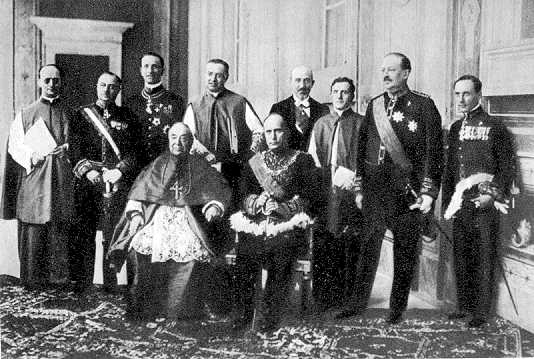
(Cardinal Gasparri and Benito Mussolini (seated) after exchanging treaty ratifications
in the Hall of Congregations, the Vatican, June 7th, 1929).
The title of Count Palatine was conferred, recently, by the Cardinal Vicar of Rome and confirmed in a letter from the Papal Secretariat of State. Information on the Papal nobility today has been provided to this author by the Most Rev Monsignor Karel Kasteel, of the office of the Cardinal Camerlengo (conversation, 1993).
If you found this article about the catholic hierarchy interesting, you may wish to have a look at the book "Find Your Noble Ancestors!"
Rules of noble succession
by Jan-Olov von Wowern
(Free article)
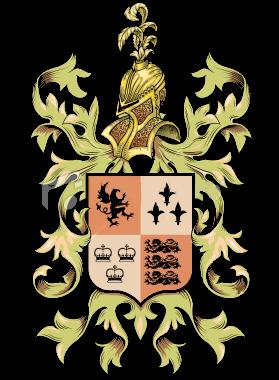
Let me first say that the rules of noble succession, as they apply to a specific noble family, can normally not be changed. They are determined either by:
1) the rules of succession laid down in the letter patent which was given to the family member who was first ennobled (for patent nobility)
or
2) the rules of succession in use at the time and the place where the family was first recognised as noble (for original nobility)
It follows that in the case of patent nobility the rules of succession could only be changed by the conferring authority, the reigning Monarch or his or hers successors (if the constitution would allow for such changes).
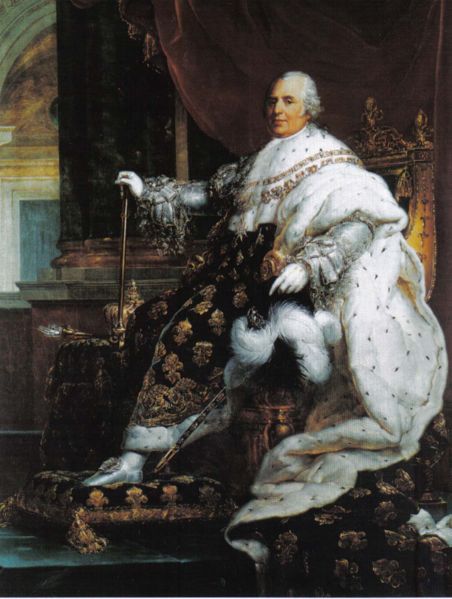
In the case of the original nobility in my opinion the rules of succession cannot ever be changed, not even by a successor of the reigning Monarch who once recognised the family as noble, because the rules of succession were in most cases not at the Monarch's disposition to change. Hence, for all practical purposes and certainly for the study of genealogy, we may assume that noble families are bound by certain rules of succession that must be adhered to.
(Picture right: Luis XVIII, King of France (1755-1824)
When we discuss succession, we should define whether we mean the succession to the nobility (that is, which family members in the next generation will inherit the name, the arms and the quality of continuing the family line), and the succession to the headship of a noble family. As implied by the title, in this article I will mainly discuss the succession of nobility in the general and collective sense.
Noble succession is either agnatic or cognatic. In my genealogy book "Find Your Noble Ancestors!", I have defined those terms as follows: "Agnatic succession: succession to the nobility ... continues only on the spear (male) side, from father to son." "Cognatic succession: in many countries this was the original form of succession among the ancient nobility, meaning the nobility ... continued on both the spear (male) and distaff (female) side in parallel lines".
The vast majority of all noble families have agnatic succession, meaning both sons and daughters of a noble father are noble, but only the grandchildren of the sons (and not of the daughters) are noble. Certainly in most families created noble by means of a letter patent issued by a Monarch, this is by far the most common rule of succession.
Cognatic succession is, for practical genealogical purposes, only relevant in a few cases where it can be shown that this was indeed the original form of noble succession of the family, and there is an unbroken chain of succession from these (ancient) times down till today.
If we were to discuss the succession to the headship of a family, it would be necessary to distinguish between the two variants of cognatic succession, true and false. True cognatic succession means the firstborn child, whether a son or a daughter, has the best claims. False cognatic succession would mean any son would inherit before a daughter regardless if he was younger, but in the absence of sons the oldest daughter would have the best claims.

The kingdom of Sweden today has, according to its constitution, true cognatic succession, that is the firstborn child of the Monarch has the best claims to the succession to the Throne. Some other Monarchies also have this system.
If, for genealogical purposes, you want to find out if a certain noble family as agnatic or cognatic succession, you need to either look at the letter patent by which the family was created noble, or, in the case of the original nobility, establish the terms and conditions for noble succession in use at the time and place where the family was first recognised as noble. In most cases, the family members living today will be able to tell you which form of succession they have.
(Picture above: Jan-Olov von Wowern lives in Stockholm, Sweden, and is the head of the Swedish branch of the von Wowern family, dating back to its founder who was born around 1090 and made a Marquis in 1141. He is active in European charitable and nobiliary work).
Author Links | |
Blog URL: | http://www.findyournobleancestors.blogspot.com/ |
Business URL: | |
Nobiliary laws and Regulations
In some countries the nobility is a subject of public law (Belgium, Finland, Netherlands, and in Spain only regarding the titled nobility). In other countries this is not the case, and then the nobility may have organized itself in one or more associations in order to have an institution to handle nobiliary issues. It is therefore of the utmost importance for every noble family to define and clarify under which legislation, or under which set of rules or regulations whether codified or not, they are a subject.
Nobiliary law is a complex and multi-faceted subject. It is often necessary to do extensive research in order to establish which rules apply to a specific noble family. A starting place can be to collect relevant literature from (or about) the country where the family is known (or believed) to have been ennobled (or first recognized as noble).
Maybe the most important thing to remember about nobiliary law is that it is not the same as public law. It may well be possible, according to national legislation, for a non-noble person to assume a noble surname, but this does not make him member of the nobility. A person can only be a member of the nobility if they are so according to nobiliary law, whether this is in harmony with public law or not.

